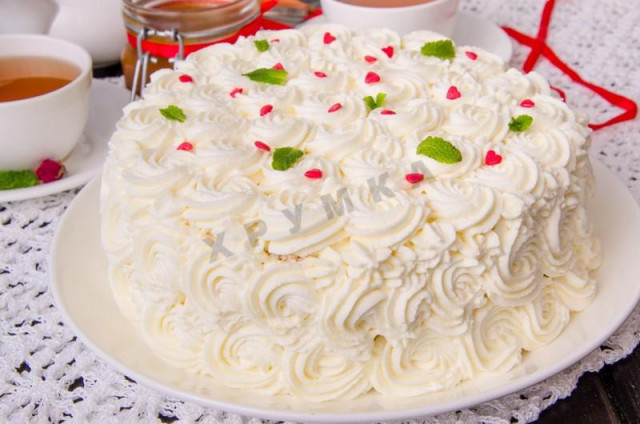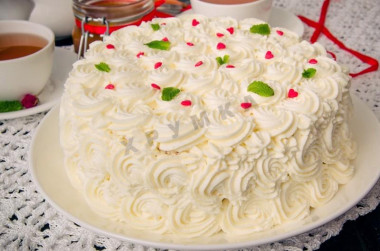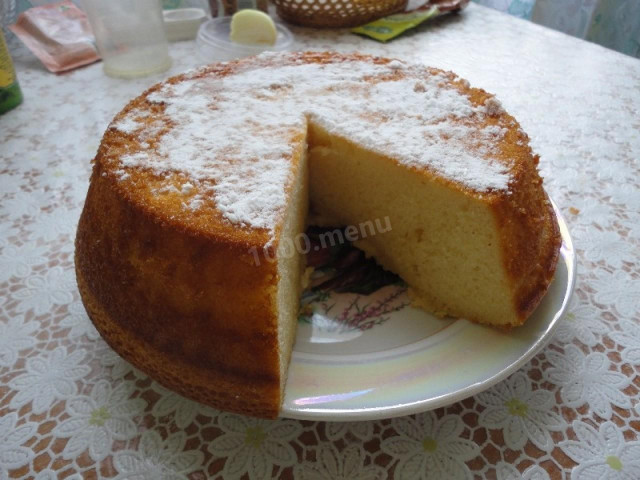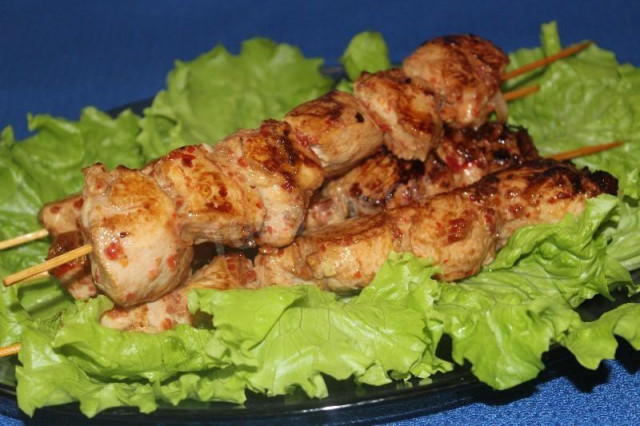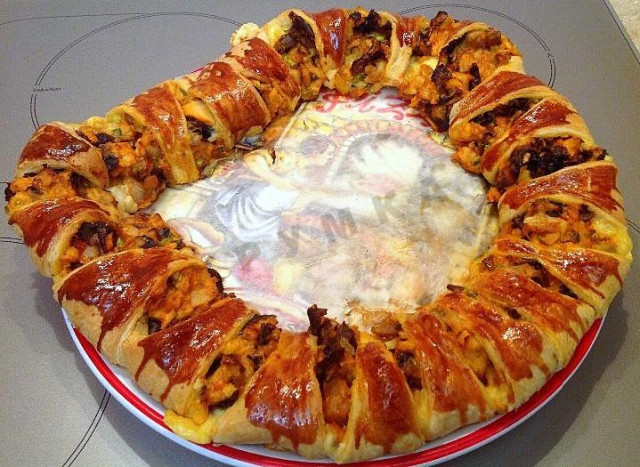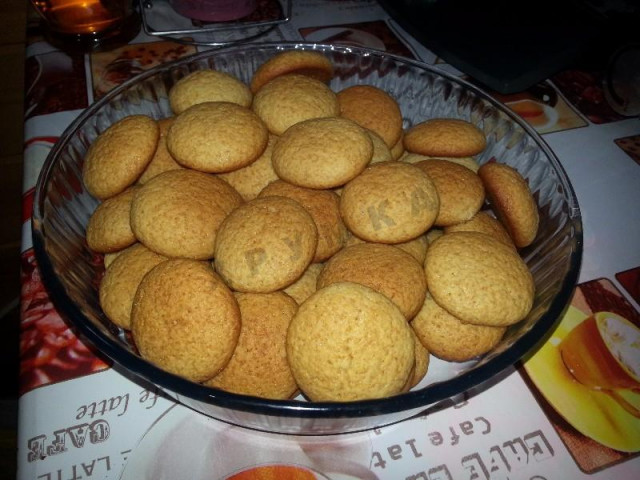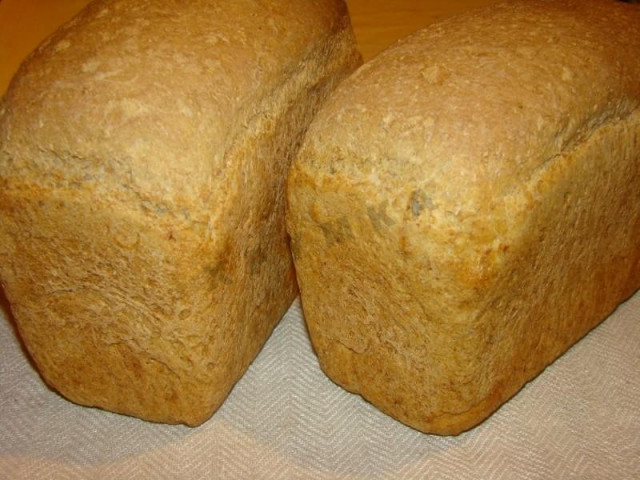Composition / ingredients
Step-by-step cooking
Step 1:
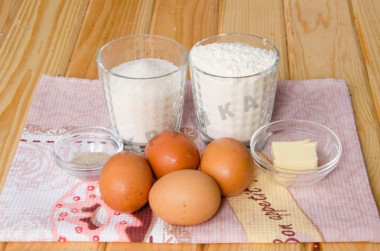
First prepare the sponge cake. By the way, if possible, it is better to prepare it in advance, for example, the night before. During the night, the biscuit will thicken and it will be more convenient to work with it.
Step 2:
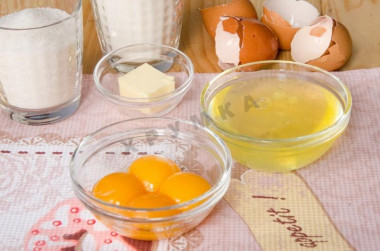
4 large eggs carefully divide into whites and yolks. Be careful, the yolk should not get into the proteins.
Step 3:
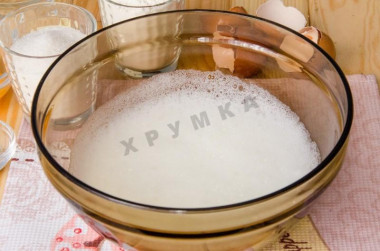
Pour the proteins into a dry bowl and whisk until a light fluffy foam is obtained.
Step 4:
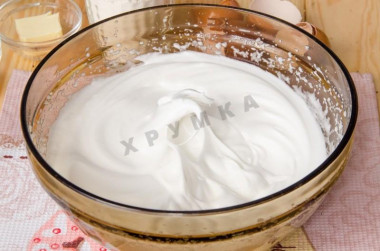
Without stopping whipping, gradually add half the sugar (75 g) to the proteins and whisk until the mass becomes thick and shiny.
Step 5:
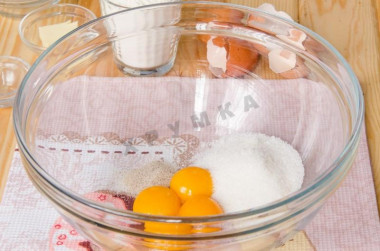
In a separate bowl, mix the yolks, the remaining granulated sugar (also 75 g) and vanilla sugar.
Step 6:
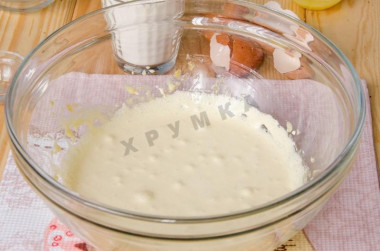
Beat with a mixer for 4-5 minutes, the yolks should turn into a lush and thick mass, and also lighten significantly.
Step 7:
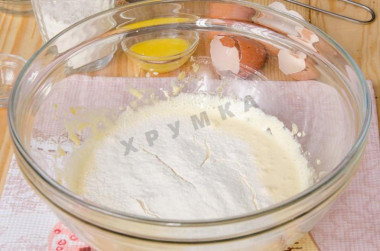
Add the sifted flour to the beaten yolks alternately in small portions
Step 8:
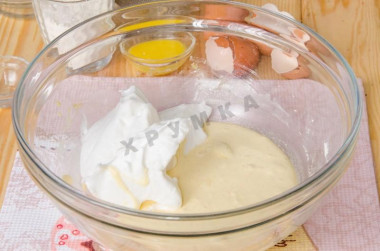
And whipped whites. Each time, the dough is carefully but thoroughly mixed with a spatula or whisk to get a homogeneous dough.
Step 9:
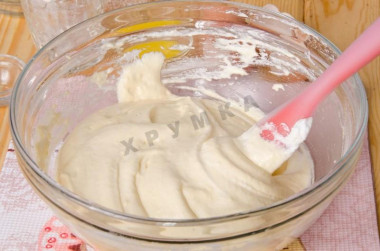
After adding the last portion of proteins, you should get a very light and airy dough. If desired, you can add 0.5 tsp baking powder to the dough, to do this, add it to the flour and sift everything together.
Step 10:
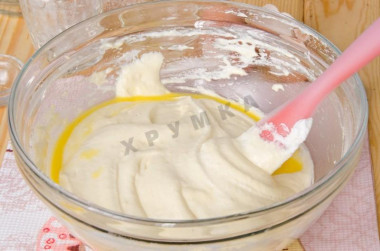
At the very end, add the melted and already slightly cooled butter. Pour it over the sides of the bowl.
Step 11:
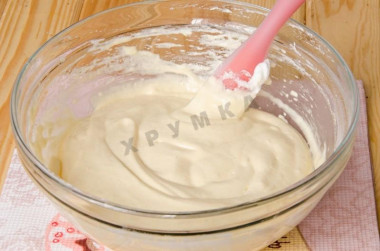
And also stir thoroughly.
Step 12:
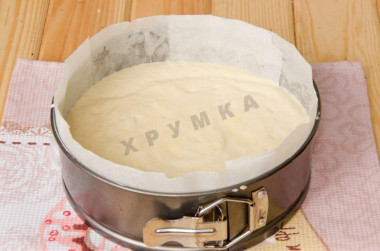
Cover the mold with a diameter of 20-22 cm with baking paper or grease with butter and sprinkle with flour. Put the dough into the mold.
Step 13:
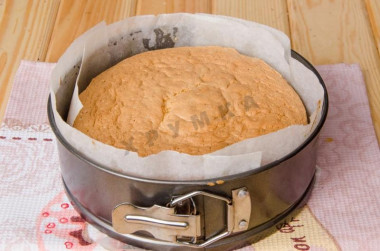
Bake the sponge cake in a preheated 180 C oven for about 35-40 minutes. It is better not to open the oven for the first 20-30 minutes, since the biscuit may fall off from the temperature difference. Remove the finished biscuit from the mold, put it on the grill and leave it until it cools completely.
Step 14:
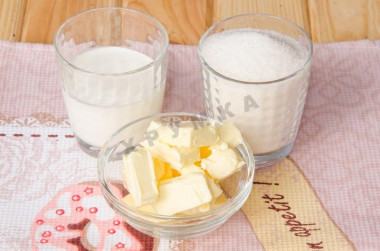
Prepare the caramel sauce.
Step 15:
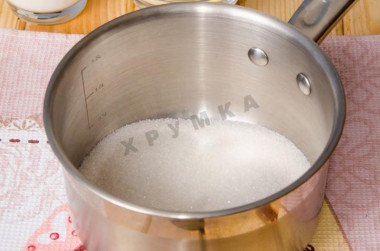
Pour sugar into a deep saucepan with a thick bottom.
Step 16:
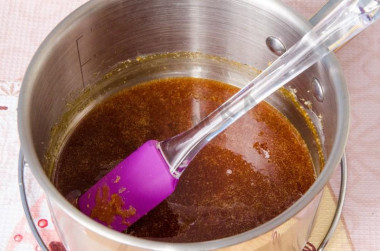
Put a saucepan on medium heat and, stirring from time to time, completely melt the sugar. Be careful not to burn the sugar, otherwise the sauce will be bitter!
Step 17:
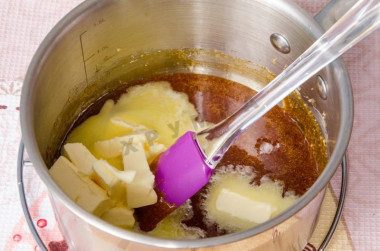
Without removing the saucepan from the heat, enter the butter in parts. Mix thoroughly, the caramel should thicken slightly and become homogeneous.
Step 18:
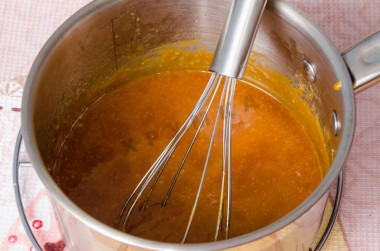
Don't worry if the butter refuses to combine with caramel in the first minutes, just hold a saucepan with caramel on a low heat and mix it thoroughly (it's most convenient to do it with a whisk!).
Step 19:
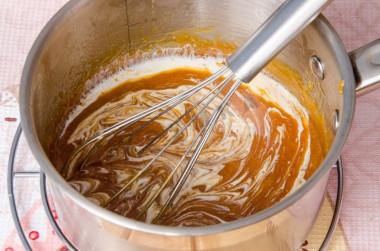
Fat cream (it is very important to take fat cream from 33% and above, cream of lower fat content will not give the desired density and may curdle when heated) heat on the stove or in the microwave almost to a boil and pour into the caramel in a thin stream, constantly stirring with a whisk.
Step 20:
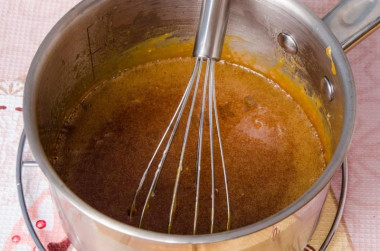
Caramel sauce is ready. Remove it from the heat, pour it into a suitable container and let it cool. Store the cooled sauce in the refrigerator. During cooling, the sauce will slightly thicken and resemble condensed milk in consistency. By the way, only half of the sauce will be needed to make the cake, the remaining half can be served with pancakes, pancakes, croutons, etc .
Step 21:
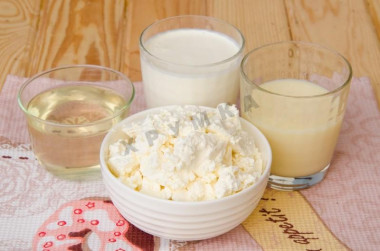
Prepare the cream and syrup for impregnation. The simplest syrup is suitable for impregnation. To do this, combine 50 g of sugar with 50 g of water, bring to a boil and boil for 1-2 minutes. Let the finished syrup cool down. If desired, you can add 1 tablespoon of cognac, rum or other alcohol to the syrup for flavor (I didn't add anything).
Step 22:
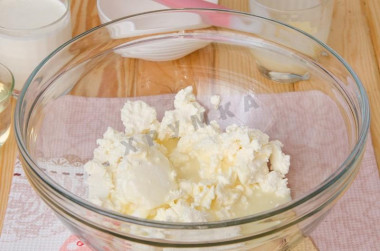
For the cream, combine cream cheese and condensed milk in a bowl.
Step 23:
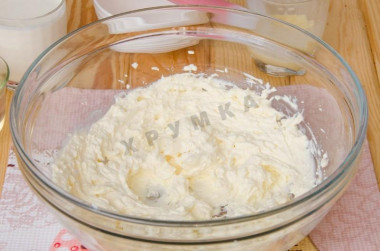
Whisk for 2-3 minutes to make the mixture fluffy and homogeneous.
Step 24:
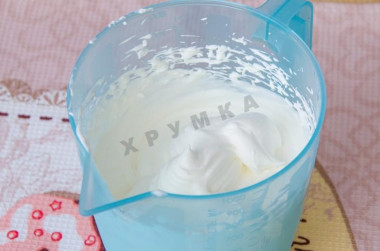
Whisk the heavy cream to a density. To make the cream easier to whip, the whipping container, the whisk of the mixer and the cream itself cool well.
Step 25:
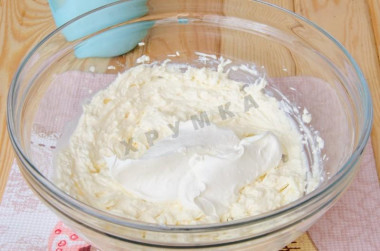
In two or three steps, add whipped cream to a bowl with cream cheese and condensed milk.
Step 26:
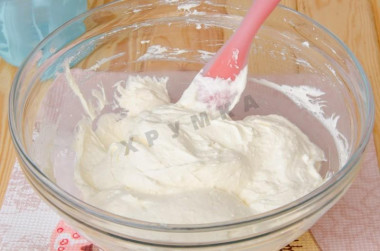
Mix gently. The cream is ready.
Step 27:
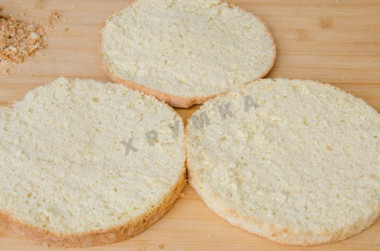
Assemble the cake. First, cut the sponge cake into 3 equal cakes.
Step 28:
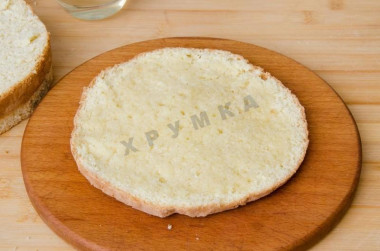
Lay out one cake and soak it with syrup, the degree of impregnation is completely to your taste (if you like sufficiently wet cakes, then prepare a double portion of syrup).
Step 29:
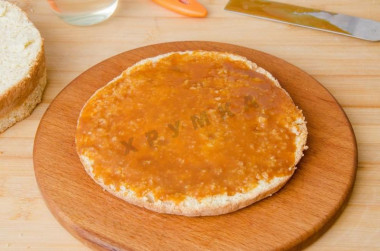
Apply a thin layer of caramel to the soaked cake.
Step 30:
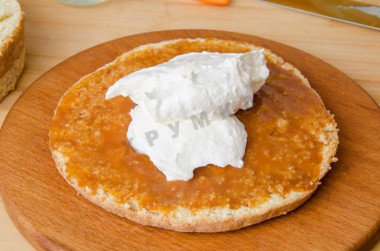
Put some of the cream on top and smooth it out.
Step 31:
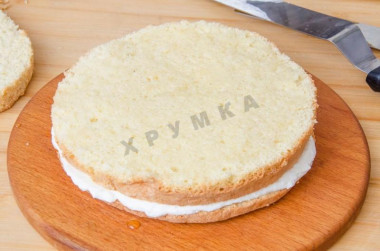
Cover the cream with a second cake, also soak it with syrup, cover with a layer of caramel and smear with cream.
Step 32:
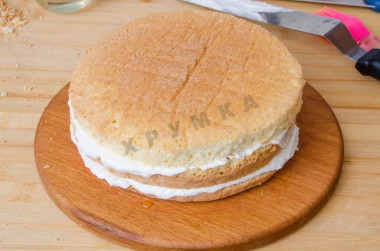
Cover with the remaining cake flat side up.
Step 33:
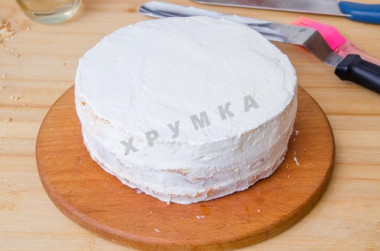
Cover the cake with cream on all sides and smooth it out.
Step 34:
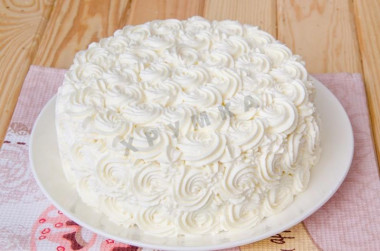
Decorate the cake to your liking. I decorated it with curls of cream, which I deposited through a pastry bag with a curly nozzle. Since such a decoration requires a lot of cream, I initially prepared 1.5 servings of cream.
Step 35:
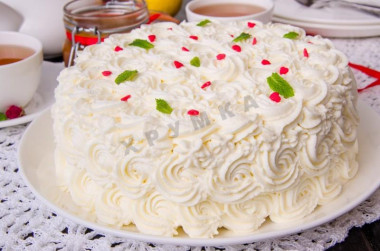
The Caramel cake is ready. Let it soak for 2 hours and you can serve it to the table.
Step 36:
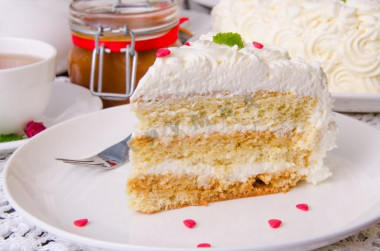
Bon appetit!
Calorie content of the products possible in the dish
- Chicken egg - 157 kcal/100g
- Egg white - 45 kcal/100g
- Egg powder - 542 kcal/100g
- Egg yolk - 352 kcal/100g
- Ostrich egg - 118 kcal/100g
- Whole durum wheat flour fortified - 333 kcal/100g
- Whole durum wheat flour, universal - 364 kcal/100g
- Flour krupchatka - 348 kcal/100g
- Flour - 325 kcal/100g
- Granulated sugar - 398 kcal/100g
- Sugar - 398 kcal/100g
- Condensed milk with sugar - 324 kcal/100g
- Butter 82% - 734 kcal/100g
- Amateur unsalted butter - 709 kcal/100g
- Unsalted peasant butter - 661 kcal/100g
- Peasant salted butter - 652 kcal/100g
- Melted butter - 869 kcal/100g
- Cream 35% - 337 kcal/100g
- Cream 40% - 362 kcal/100g
- Cream cheese with 50% fat content - 349 kcal/100g
- Vanilla sugar - 379 kcal/100g
- Sugar syrup - 300 kcal/100g

